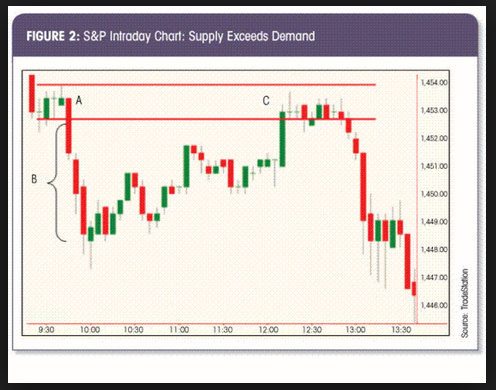Free Cash Flow to the Firm FCFF: Examples and Formulas
Contents
Free Cash flow to the firm can be one such measure that cannot be manipulated by Accounting Changes. For Alibaba DCF, I had made the financial statement analysis, forecast financial statements and then calculate Free Cash Flow to the Firm. Dividends PayableDividend payable is that portion of accumulated profits that is declared to be paid as dividend by the company’s board of directors. Until the dividend declared is paid to the concerned shareholders, the amount is recorded as a dividend payable in the head current liability. Cash And Cash EquivalentsCash and Cash Equivalents are assets that are short-term and highly liquid investments that can be readily converted into cash and have a low risk of price fluctuation. Cash and paper money, US Treasury bills, undeposited receipts, and Money Market funds are its examples.
- A solvency ratio is a key metric used to measure an enterprise’s ability to meet its debt and other obligations.
- The downside is that it requires analysis and assumptions to be made about what the firm’s unlevered tax bill would be.
- Capex and increases in NWC each represent outflows of cash, which means less free cash flow remains post-operations for payments related to servicing interest, debt amortization, etc.
- Examples include interest income, interest expense, gain/loss on disposal of fixed assets and other one-time charges.
- Free cash flow measures the cash that a company will pay as interest and principal repayment to bondholders plus the cash that it could pay in dividends to shareholders if it wanted to.
- Free cash flow to the firm is the amount of cash flow left from operations for distribution after paying all other expenses.
The Balance SheetA balance sheet is one of the financial statements of a company that presents the shareholders’ equity, liabilities, and assets of the company at a specific point in time. It is based on the accounting equation that states that the sum of the total liabilities and the owner’s capital equals the total assets of the company. Cash Flow From OperationsCash flow from Operations is the first of the three parts of the cash flow statement that shows the cash inflows and outflows from core operating business in an accounting year. Operating Activities includes cash received from Sales, cash expenses paid for direct costs as well as payment is done for funding working capital.
As seen from the above formula, earnings generated are not adjusted for taxes and interests. For instance, positive free cash flow to a firm would signify that a firm has retained some portion of its cash after meeting its financial obligations. Alternatively, a negative FCFF signifies that a firm has failed to generate adequate revenue to meet its financial obligations or partake in required investment activities. Companies can also up their free cash flow to firm values by stretching out their payments, tightening payment collection policies, and depleting inventories.
What is the FCFF Formula?
Non-cash charges are items that affect net income but do not involve cash payment. DepreciationDepreciation is a systematic allocation method used to account for the costs of any physical or tangible asset throughout its useful life. Depreciation enables companies to generate revenue from their assets while only charging a fraction of the cost of the asset in use each year. Equity CapitalEquity Capital refers to the capital collected by a company from its owners and other shareholders in exchange for a portion of ownership in the company. Moreover, the Equity Research Analysts discuss their findings & details in the Equity Research Reports.
Finally, the working capital initially fed to operations is eventually gained back, causing it to be added to the free cash flows. To forecast FCFF and FCFE, analysts build a variety of models of varying complexity. A common approach is to forecast sales, with profitability, investments, and financing derived from changes in sales. The purpose of the coverage in the subsequent sections is to develop the background required to use the FCFF or FCFE approaches to value a company’s equity. The expenditures for maintenances of assets is only part of the capex reported on the Statement of Cash Flows. Therefore, this input to the calculation of free cash flow may be subject to manipulation, or require estimation.
It measures how much cash a firm makes after deducting its needed working capital and capital expenditures . Non-operating assets, such as excess cash and marketable securities, noncurrent investment securities, and nonperforming assets, are usually segregated from the company’s operating assets. They are valued separately and then added to the value of the company’s operating assets to find total firm value. If an investor can take control of the company , dividends may be changed substantially; for example, they may be set at a level approximating the company’s capacity to pay dividends. Such an investor can also apply free cash flows to uses such as servicing the debt incurred in an acquisition.

The most common financial models include the Discounted Cash Flow model , Leveraged Buyout model , the Comparable Company Analysis model, and Mergers & Acquisition model. Property Plant And EquipmentProperty plant and equipment (PP&E) refers to the fixed tangible assets used in business operations by the company for an extended period or many years. Such non-current assets are not purchased frequently, neither these are readily convertible into cash. DCF valuation focuses on the cash flows generated by the Operating Assets of the business and how it maintains those assets . Thus, we can derive free cash flow to the firm from a wide variety of metrics.
The downside is that it requires analysis and assumptions to be made about what the firm’s unlevered tax bill would be. FCFE includes interest expense paid on debt and net debt issued or repaid, so it only represents the cash flow available to equity investors . Investors must thus keep an eye on companies with high levels of FCFF to see if these companies are under-reporting capital expenditures andresearch and development.
Gain in-demand industry knowledge and hands-on practice that will help you stand out from the competition and become a world-class financial analyst. In our case of FCFF and FCFE from EBITDA, one should note that a comprehensive view of the enterprise is gained because EBITDA has not paid interest and non-cash charges.
Calculation of Free Cash Flows from EBITDA
This article will focus on understanding what “Free Cash Flows” are in general and why FCFF should be used to measure a company’s operating performance. Instead, some excerpts from these statements may be provided in the question paper. One such example is when Earnings before Interest and Taxes is provided. Hence, we have to begin our calculation with EBIT and derive the free cash flow to the firm based on the supplementary information. Get instant access to video lessons taught by experienced investment bankers.

Cash Flow From InvestmentsCash flow from investing activities refer to the money acquired or spent on the purchase or disposal of the fixed assets for the business purpose. For instance, the purchase of land and joint venture investment is cash outflow, while equipment sale is a cash inflow. Here is a step by step procedure to calculate the free cash flow to the firm fcff formula from ebitda from EBIT. Whether it’s comparable company analysis, precedent transactions, or DCF analysis. Each of these valuation methods can use different cash flow metrics, so it’s important to have an intimate understanding of each. As our infographic shows, simply start at Net Income then add back Taxes, Interest, Depreciation & Amortization and you’ve arrived at EBITDA.
Free Cash Flow to Equity (FFCE)
Tax ShieldTax shield is the reduction in the taxable income by way of claiming the deduction allowed for the certain expense such as depreciation on the assets, interest on the debts etc. It is calculated by multiplying the deductible expense for the current year with the rate of taxation as applicable to the concerned person. Net DebtsDebt minus cash and cash equivalents equals net debt, which is the amount of debt a company has in comparison to its liquid assets. It is a metric that is used to evaluate a firm’s financial liquidity and aids in determining if the company can meet its obligations by comparing liquid assets to total debt. Discounted cash flow models are widely used by analysts to value companies. The payout ratio is a metric used to evaluate the sustainability of distributions from REITs, Oil and Gas Royalty Trusts, and Income Trust.

For example, a rapidly growing manufacturer with a positive cash conversion cycle will need to outlay cash to purchase inventory for profitable orders that it takes. The business can show a positive net income but have very negative cash flows as the cash gets stuck in the working capital cycle, namely inventory and accounts receivable. FCFEs can be projected in a levered discounted cash flow model to derive to the market value of equity. Furthermore, the correct discount rate to use would be the cost of equity, as the cash flows and discount rate must match up in terms of the represented stakeholders. FCFE, or “free cash flow to equity”, measures the amount of cash remaining for equity holders once operating expenses, re-investments, and financing-related outflows have been accounted for. The difference between the levered and unlevered cash flow is also an important indicator.
Free Cash FlowsFree cash flow is a measure of cash generated by a company after all expenses and loans have been paid, and it is calculated by subtracting capital expenditure from operating cash flow. Where I is interest expense, t is tax rate and FC is the net capital expenditure for the period. FC equals the closing value of fixed assets and intangible assets plus depreciation and amortization expense minus the opening balance of fixed assets and intangible assets.
Free Cash Flow to the Firm Calculator
In the next approach, the formula for free cash flow to equity starts with cash flow from operations . Unlevered free cash flow is computed before interest payments, so viewing it in a bubble ignores the capital structure of a firm. After accounting for interest payments, the levered free cash flow of a firm may actually be negative, a https://1investing.in/ possible sign of negative implications down the road. Analysts should assess both unlevered and levered free cash flow over time for trends and not give too much weight to a single year. Free cash flow to the firm is the cash that is left over after all depreciation expenses, taxes, working capital, and investments are accounted for.
Using the FCFE, an analyst can determine the Net Present Value of a company’s equity, which can be subsequently used to calculate the theoretical share price of the company. In calculating free cash flows to equity from the EBITDA as the starting point, we can ignore depreciation and amortization expense in our equation as it occurs twice, canceling its effect whatsoever. At the same time, the changes in working capital can either be obtained from the supporting schedule of working capital or the cash flow statement. The net borrowings, being a function of issued debt and repaid debt, can be deduced from the cash flow statement. Non-cash ExpenseNon-cash expenses are those expenses recorded in the firm’s income statement for the period under consideration; such costs are not paid or dealt with in cash by the firm.
Any investor looking to invest in a company’s corporate bond or public equity should check its FCFF. A study of professional analysts substantiates the importance of free cash flow valuation . When valuing individual equities, 92.8% of analysts use market multiples and 78.8% use a discounted cash flow approach. When using discounted cash flow analysis, 20.5% of analysts use a residual income approach, 35.1% use a dividend discount model, and 86.9% use a discounted free cash flow model.
EBITDA offers a way to judge a company’s profitability at a sort of baseline level. Recall, CFO is calculated by taking net income from the income statement, adding back non-cash charges, and adjusting for the change in NWC, so the remaining steps are to just account for Capex and the net borrowing. Since firms must pay financing and interest expenses on outstanding debt, un-levering removes that consideration from analysis.
